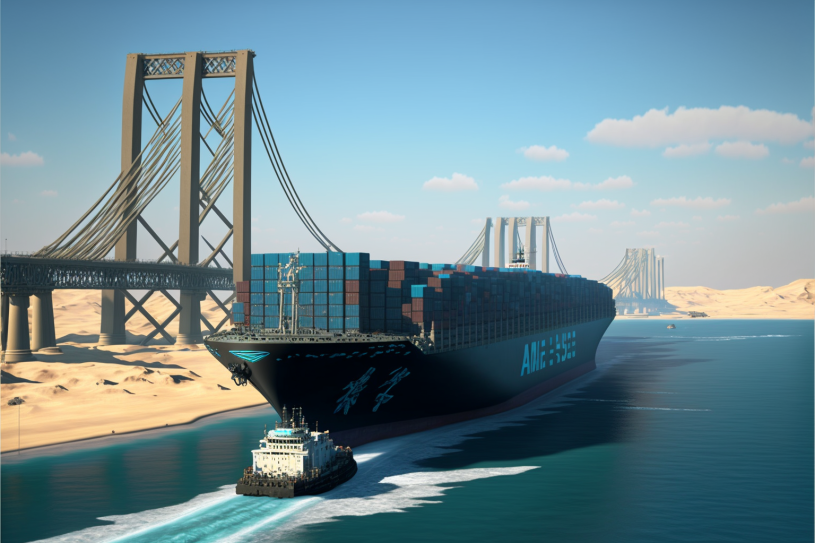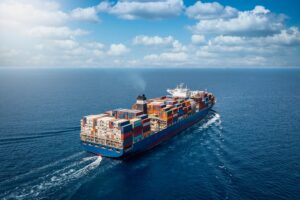On March 23, 2021, the container ship “Ever Given” got stuck in the Suez Canal and blocked the important waterway for six days. The incident caused delays and disruptions in the global supply chain, which cost businesses all over the world billions of dollars.
As an import/export software company, VISCO Software understands the importance of being prepared for unexpected disruptions in the global trade industry. That’s why we offer a complete global trade ERP (Enterprise Resource Planning) software solution with features like container tracking and landed cost tracking to help our clients stay ahead of the game.
In this blog post, we’ll take a closer look at the Suez Canal crisis of 2021 and talk about how businesses can be better prepared for similar challenges in the future. By implementing tools like our global trade management ERP software, companies can ensure that they have the necessary visibility and control over their supply chain to weather any storm.
Did you Know
Some estimates say that the crisis caused more than 300 ships to be delayed and cost businesses billions of dollars. In addition to the direct costs of the disruption, there were also indirect costs like lost sales, missed opportunities, and unhappy customers.
The consequences of a lack of supply chain visibility
The Suez Canal crisis had far-reaching consequences for businesses around the world. Without visibility into the status of their shipments and the locations of their containers, companies were left in the dark as they tried to navigate the disruptions.
Some examples of how the crisis affected businesses include:
- Delays in shipping goods, resulting in lost sales and unhappy customers.
- Increased costs due to the need for rerouting shipments and finding alternative transportation
- Inability to meet demand or fulfill orders, resulting in missed opportunities
- Lack of visibility into inventory levels, causing problems with forecasting and planning
The expenses and difficulties associated with a lack of cargo and container visibility extend beyond the initial delays. A lack of supply chain awareness can also result in inefficiencies, resulting in higher prices and missed opportunities. In addition, it might make it difficult for enterprises to make educated decisions on their supply chain and to adapt to shifting market conditions.
How to be better prepared for next time?
Importers and exporters should develop a contingency plan by taking the necessary actions in order to be prepared in the case of another crisis.
- Diversify your supplier base: Maximize your supply chain with a diversified supplier base. With sourcing from multiple providers in various areas, you can reduce reliance on one vendor and diminish the effects of any interference.
- Establish alternative transportation routes: To ensure your goods make it to their destination, establishing alternate routes is essential. Whether through different means of transport or additional carriers – having a backup plan in place allows for the seamless delivery of merchandise even if your primary route is unexpectedly impeded.
- Implement contingency plans: Having detailed strategies on hand to tackle and manage interruptions can ensure that you react more efficiently when an emergency arises. This should encompass steps for recognizing and counteracting likely weak spots, searching for new providers or shipping paths, as well as speaking with key people involved. By having these plans in place ahead of time, the business will be able to handle any unexpected issues without delay.
- Utilize supply chain management software: Investing in a reliable supply chain management software can provide you with instantaneous oversight of your shipments and containers, so that you are capable to recognize potential roadblocks early on and take quick action to limit the negative effects.
- Collaborate with partners and suppliers: Establishing a strong relationship with your suppliers and maintaining open communication are essential to formulating a reliable emergency plan. By staying in contact with those who you partner with, you can reduce the repercussions of an unexpected event on your company’s operations.
The benefits of supply chain visibility
Supply chain visibility has numerous benefits for businesses. Enhanced efficiency and cost reductions are arguably the most apparent advantages. With real-time insight into the status of shipments and the whereabouts of containers, businesses are able to spot bottlenecks and interruptions in the supply chain and take preventative action to rectify them. This can reduce delays and limit the effects of disruptions, so saving time and money.
Visibility in the supply chain also makes it easier to make decisions and handle risks. If a business has a clear picture of its supply chain, it can spot possible risks and take steps to reduce them. This can include things like finding different suppliers, making backup plans, and finding different ways to ship goods.
Supply chain visibility can also lead to enhanced customer satisfaction. Companies can improve the customer experience and build trust by keeping customers up to date in real time about the status of their orders and when they are likely to arrive. This is especially important in the fast-paced, competitive business world of today, where customers expect businesses to be honest and communicate with them in a timely manner.
How to improve supply chain visibility
Improving supply chain visibility is critical for businesses that want to be better prepared for disruptions like the Suez Canal crisis. One effective way to do this is by implementing supply chain management software like Visco Software.
Visco Software is a leader in the global trade ERP software industry, with 22 years of experience and hundreds of five-star reviews. Our software is designed to maximize efficiency and minimize mistakes, helping businesses streamline their supply chain operations and stay ahead of the game.
Some of the key features and benefits of Visco Software include:
- Maximizing Efficiency: Our software allows you to throw away those cumbersome Excel spreadsheets and move to company-wide shared docs. Plus, with hassle-free container updates and the ability to minimize mistakes, you can focus on what really matters – growing your business.
- Fast Track To Success: With Visco Software, you can auto track containers in just 5 seconds and integrate with QuickBooks in as little as 30 minutes. Plus, our sandbox/training environment is ready the next day, so you can hit the ground running.
- Effortless Implementation: When you choose Visco Software, you’ll have a dedicated implementation manager to guide you through the process. Plus, you’ll have unlimited technical support and onsite training available to ensure a smooth transition.
By investing in Visco Software, you can take control of your supply chain and be better prepared for disruptions like the Suez Canal crisis. Don’t let a lack of visibility hold you back – start your journey to success today.
Conclusion
In conclusion, supply chain visibility is a critical factor in managing disruptions like the Suez Canal crisis. Without being able to see where shipments are and what their status is, businesses don’t have enough information to make informed decisions about their supply chain.
To improve visibility and be better prepared for disruptions, businesses need to invest in the right tools and strategies. One effective solution is supply chain management software like Visco Software. With features like container tracking and hassle-free updates, Visco Software helps businesses streamline their supply chain operations and make informed decisions.
REQUEST A DEMO





